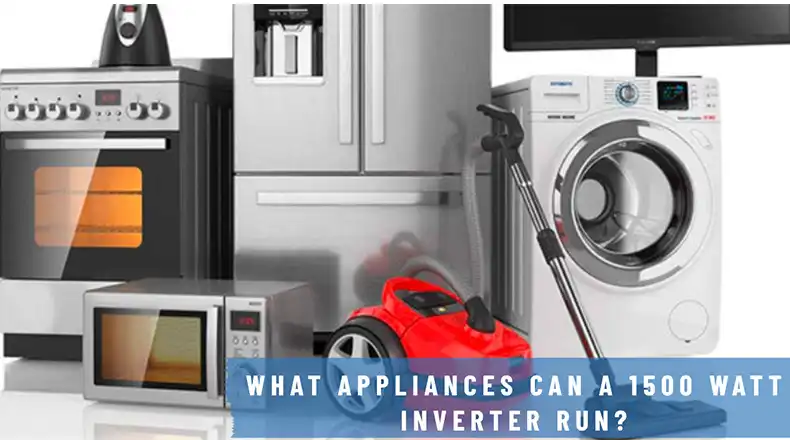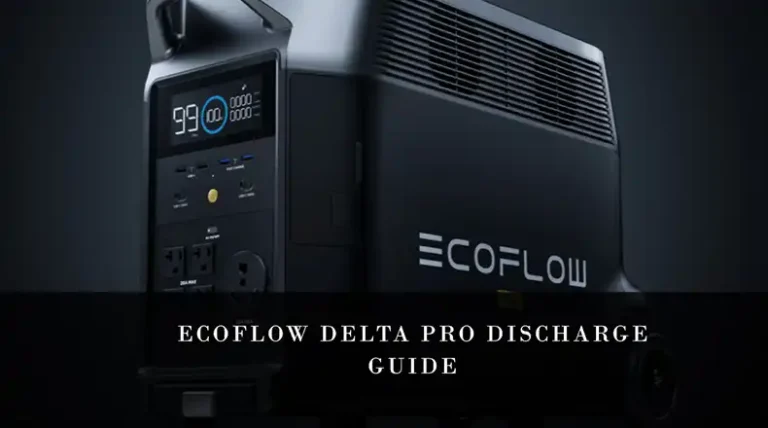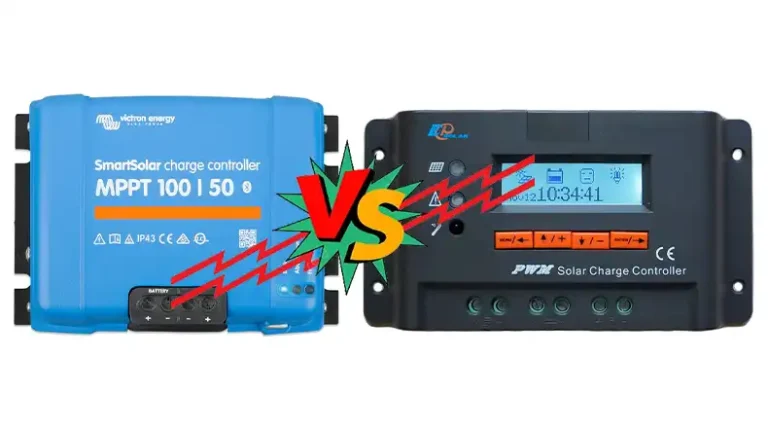What Appliances Can a 1500 Watt Inverter Run?
Having a power inverter can be extremely useful, especially when you’re off the grid or experiencing a power outage. It allows you to convert DC battery power from sources like solar panels or your vehicle into standard AC household power. This lets you run common appliances and electronics when you don’t have access to utility power.
A 1500 watt inverter is a fairly powerful option in the world of inverters. However, its capacity is still limited compared to what you’d get from your home’s regular electrical system. It’s important to understand what a 1500W inverter is truly capable of running to avoid overloading it.
Below, we’ll explore the different types of appliances you can power with a 1500 watt inverter, key considerations to keep in mind, alternative options, and how to properly size an inverter for your needs.

Typical Wattage Requirement for Various Appliances
Most household appliances and electronics fall into a few main categories based on their typical wattage requirements:
- Kitchen Appliances: 300-1500 watts
- Electronics: 20-500 watts
- Power Tools: 200-1200 watts
- Others (heating, cooling, etc.): Varies widely
The 1500 watt rating of the inverter is its maximum continuous output capacity. You’ll want to avoid regularly exceeding this limit to prevent damage to the inverter or connected appliances.
Low Wattage (under 500W)
For low-wattage appliances under 500W, a 1500W inverter has more than enough capacity to power them without issue. Some common examples include:
- Laptops: 45-175 watts
- Phone Chargers: 5-20 watts
- LED TVs: 100-400 watts
- LED Light Bulbs: 5-20 watts
- Fans: 30-100 watts
Medium Wattage (500-1200W)
When it comes to medium wattage appliances in the 500-1200W range, a 1500W inverter can potentially run them but you’ll need to exercise more caution:
- Microwaves: 600-1200 watts
- Coffee Makers: 800-1200 watts
- Hair Dryers: 800-1500 watts
- Small Refrigerators: 300-800 watts
- Power Tools (drills, saws): 300-1000 watts
It’s crucial to verify the actual running wattage of the appliance, as printed specs can sometimes be inaccurate. Never exceed the 1500W capacity of the inverter. Additionally, some appliances with motors like refrigerators may have a higher “surge” wattage when initially starting compared to their running wattage. This surge could potentially overload or trip the inverter.
Considerations and Limitations for 1500 Watt Inverters
Wattage Ratings While checking an appliance’s wattage rating gives you a good baseline, there are some other factors to consider:
Surge Watts: As mentioned, some appliances like motors and compressors require a higher surge of power when starting up. This surge wattage could exceed the inverter’s capacity even if the running wattage seems acceptable. Consulting the specs is important.
Duty Cycle: An inverter’s duty cycle rating refers to the percentage of time it can continuously output its full rated power. For example, a 1500W inverter with a 90% duty cycle can only output 1350W continuously without overheating. This reduces its true continuous capacity.
Alternative Power Options
Sometimes running an AC appliance through an inverter may not be the most efficient solution, especially for off-grid living. In these cases, you could opt for 12V DC appliances that can run directly off your battery bank without the need for an inverter.
Common 12V DC appliances include:
- Refrigerators/Freezers
- Coolers
- Lights
- Fans
These appliances are designed specifically for RV, marine and solar power systems. They are more energy-efficient since you avoid the loss from converting between DC and AC power with an inverter.
Safety Precautions for Solar Inverters
Whenever using a power inverter, it’s crucial to follow basic safety practices:
- Never exceed the inverter’s rated capacity
- Follow all manufacturer instructions
- Ensure proper ventilation to prevent overheating
- Avoid overloading circuits by distributing loads appropriately
Inverters can malfunction when pushed beyond their limits, so it’s better to be cautious.
Typical Appliance Wattages
Here’s a handy table with some typical wattage ranges for common household appliances:
| Appliance | Wattage Range |
| Laptop | 45-175W |
| Phone Charger | 5-20W |
| LED TV | 100-400W |
| LED Light Bulb | 5-20W |
| Fan | 30-100W |
| Microwave | 600-1200W |
| Coffee Maker | 800-1200W |
| Hair Dryer | 800-1500W |
| Small Fridge | 300-800W |
| Power Drill | 300-1000W |
| Circular Saw | 600-1000W |
Use this as an estimate, but always verify the actual rated wattage on the specific appliance you plan to run.
Solar Inverter Sizing Formula
To determine the right inverter size for your needs:
- Calculate the total running wattage of the appliances you plan to use simultaneously.
- Add a 20% safety buffer to account for surge watts during startup.
- Choose an inverter rated slightly higher than this total wattage.
For example, if you want to run a laptop (150W), LED TV (200W) and a fan (75W) at the same time:
- Total running watts: 150W + 200W + 75W = 425W
- Add 20% for surge: 425W x 1.2 = 510W
- You’d want an inverter rated at 600W or higher
It’s also wise to get an inverter with some extra capacity if you plan to add more appliances in the future. And pay attention to the surge and duty cycle ratings, not just the overall wattage.
Consult an electrician if you need help properly sizing an inverter for your specific power needs and usage scenario.
Final Words
A 1500 watt power inverter gives you considerable flexibility to run many household appliances from an off-grid battery source. However, it’s critical that you understand the inverter’s actual limitations and the power requirements of your appliances.
Always verify wattages, account for surge demands, and avoid overloading the inverter beyond its capacity. With the right precautions, a 1500W inverter can be an incredibly valuable tool for keeping essentials powered when utility electricity is unavailable.



![[Explored] Why Is There an OnOff Switch on Solar Lights?](https://www.itekenergy.com/wp-content/uploads/2023/07/Why-Is-There-an-OnOff-Switch-on-Solar-Lights-768x428.webp)

![Best Solar Companies in San Jose | [2024 Guide]](https://www.itekenergy.com/wp-content/uploads/2024/03/Best-Solar-Companies-in-San-Jose-768x428.webp)

